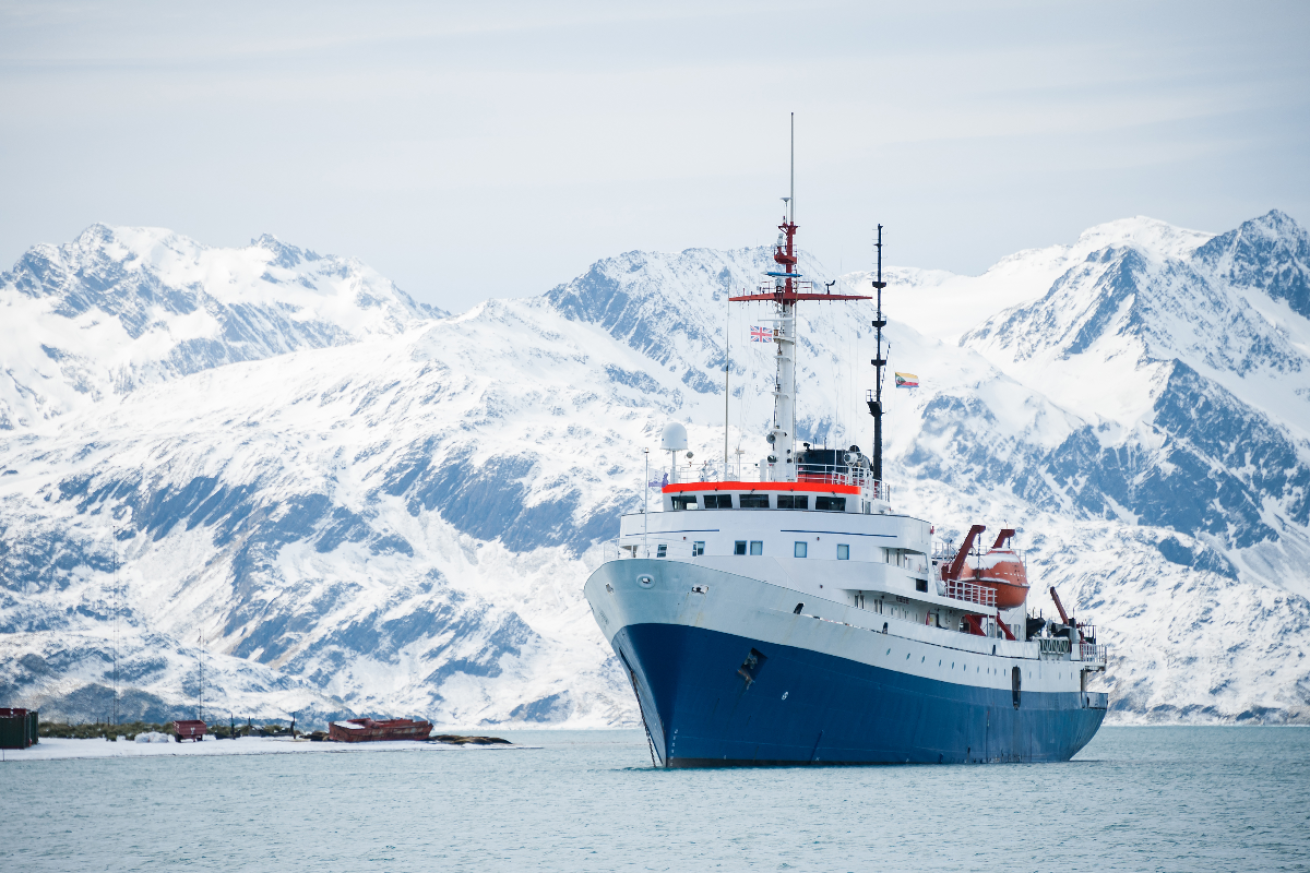The Dark Side of Our Fascination with Antarctica

Shutterstock.com/Yongyut KumsriA cruise ship on an expedition to Antarctica.
Antarctica and its ocean have long-intrigued explorers, scientists, fishermen and those bitten by the extreme environments travel bug. Still, with another summer season opening the Southern Ocean up for visits, there’s a lingering concern: are we too loud for the locals?
A May 2021 review study detailed just how bad Southern Ocean noise pollution currently is. “Marine noise is a form of ocean pollution that may affect fauna ranging from tiny zooplankton to enormous whales,” the abstract reads. “Chronic exposure” to even lower noise levels could still lead to permanent hearing loss, the study found.
Affected species include leopard seals, blue whales, colossal squid, emperor penguins and more. The impact of sensory distress could include hearing loss, miscarriages, changes in appetite, disrupted mother-calf bonding, vulnerability to predation, panic, anxiety, confusion, injury and even death, the study found. Still, the number of vessels continues to increase year to year.
The study also found that Antarctica’s 20-odd marine mammals may be suffering the most across sound frequencies. In fact, whole populations of some species could be disturbed. Many of these are apex predators – including orcas and leopard seals – that have the highest reliance on echolocation and auditory sensitivity among ocean life.
Despite these warnings, over 100,000 sightseers are expected during this 2022-23 summer – the most ever in a single season. For comparison, Our Burning Planet reported less than 7,000 cruise passengers per season 30 years ago. The tourists will arrive on 70+ passenger vessels, accounting for the largest share of traffic around the Antarctic Peninsula.
We must also account for the 50-odd research and resupply ships, fishing boats and shipping vessels that traverse the Southern Ocean each year. This number has “steadily increased in recent years,” the study found. Some research vessels use seismic airguns that shoot air out at 260 underwater decibels to survey and map the Earth’s contents. These blasts are about 17 orders of magnitude louder than natural ambient underwater noise (90 decibels) and 10 million times louder than a cargo ship (190 decibels).
Airguns also operate at low frequencies – less than 1,000 hertz – which is the most painful and disruptive to marine mammals communicating in the same range. Their natural songs and calls are drowned out and masked, the study cautions.
So, why are we allowed to be so loud?
Politically, Antarctica is preserved for “peace” and “science” – operationally translating to a carte blanche permission to the tourism industry and research vessels to operate however they like. Antarctic state officials have known about the harmful effect of human noise on the marine environment for nearly 25 years. Critics lament their secrecy, inaction and seeming unwillingness to protect this unique environment and the endangered species that call it home. There isn’t a “permanent” program to monitor the environmental impacts of tourism in Antarctica, critics say.
All these vessels add not only noise to the fragile environment but also increased microplastics, thermal stress on already-heating waters and invasive species. What’s needed for change?
In terms of solutions, the study suggested mitigation options and management strategies to lessen the impact of noise pollution. The research also underlined how limited bioacoustics findings in the Antarctic are and reiterated the urgent need for further research to fully understand how much damage we’re causing.










